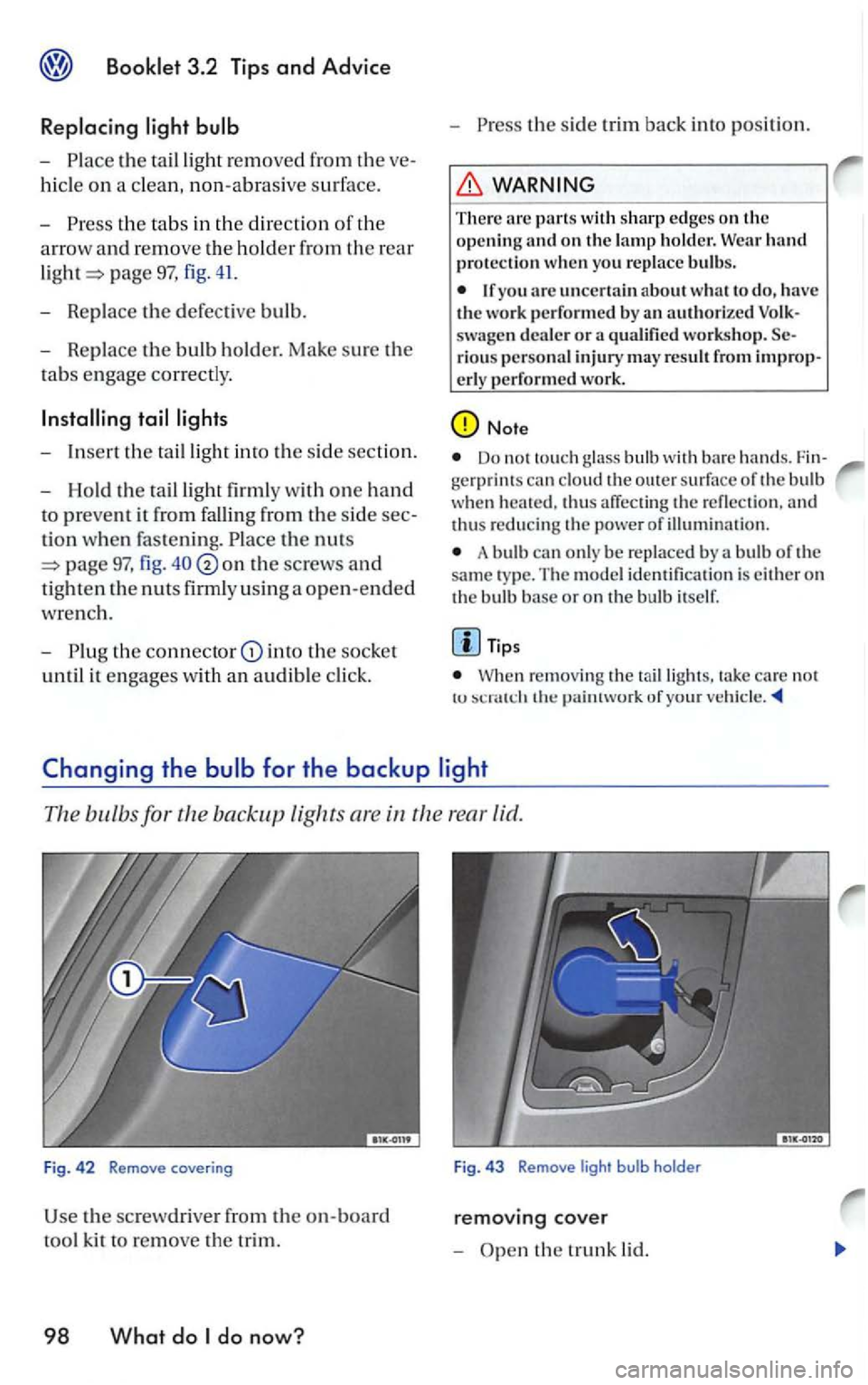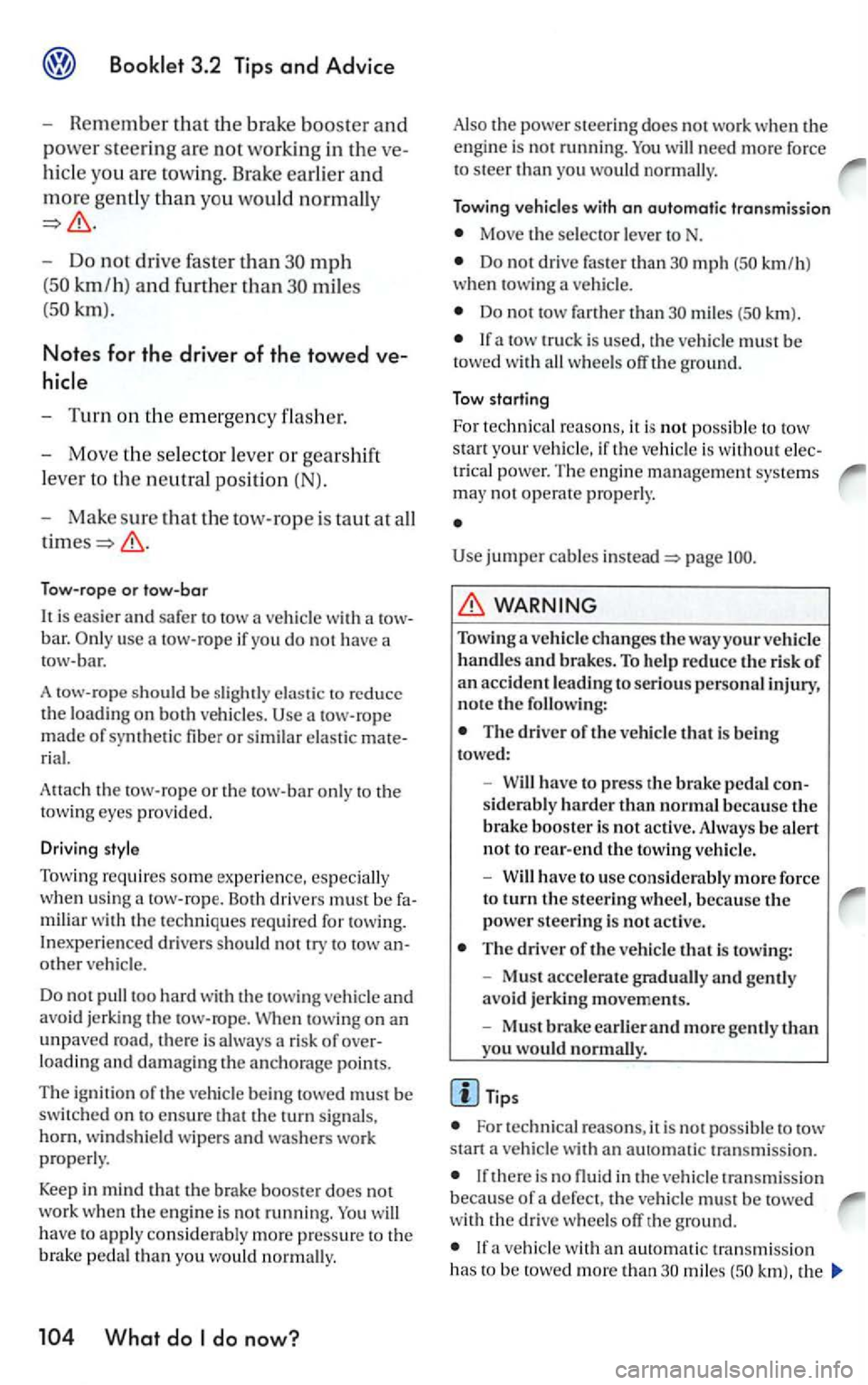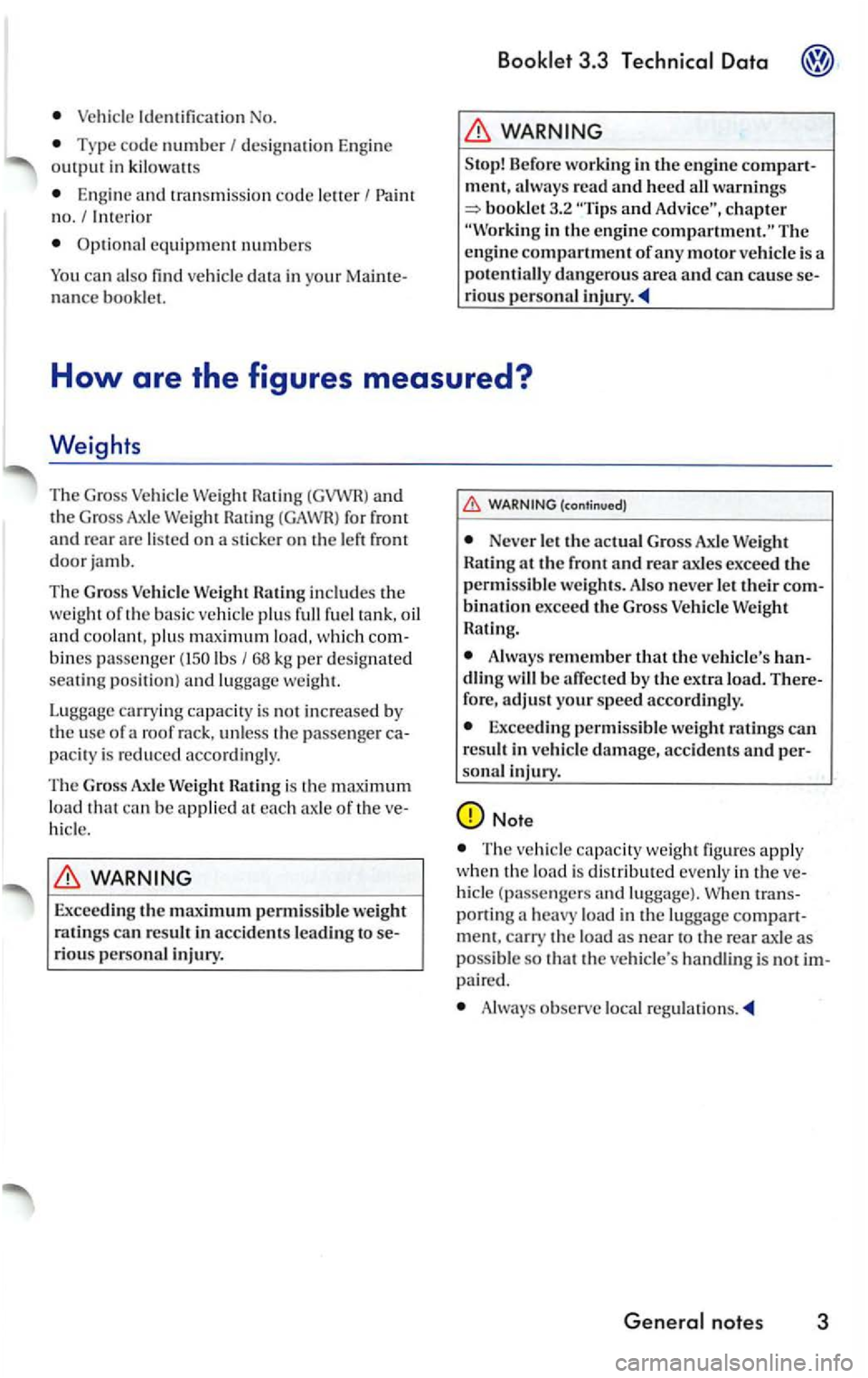Page 372 of 444
page
fig. 37 from the headligh t.
-
the bulb.
-
headlight. Make sure the holder i s properly
inserted.
-
WARNING
There are parts with
the e ngine hood.
-
the rubbe r 38
WARNING (continu ed)
are uncertain about what to the work performed by qualified workshop. riou s personal injury may result from improp-
erly performed work.
Note
Do no t to uch glass bulb with bare hands. gerprint s can cloud the o uter surface of the bulb
whe n thus affectin g th e refl ectio n . and thus reducing th e pow er o f illuminatio n .
A bulb can only be replaced by a bulb of th e
sa me ty p e. The mod el identifica tion is either on
the bulb base or on the bulb
Fig. 39 Re moving the bulb holder
- Insert the bulb h old er and turn it as fa r
a s it w ill go in th e
opposite direct io n to th e
arrow.
-
the rubbe r cover back into
WARNING
The re wit h sharp edges on th e opening
If yo u the work performed by
Page 374 of 444

-the ta illight remove d from th e
hicle on a clean, non-abrasive s urfac e.
-
t h e tabs in the direction of th e
a rr ow a
nd remove th e holder from the rear
page 97, fig. 41.
- Replace the defectiv e bulb.
- Replace the bulb h old er. Mak e sure the
tabs engage correctly.
- Insert the taillig ht int o the s ide section.
- Hold
the taillight firml y with one hand
to prevent it from fall in g from the sid e
tion when fasten ing.
page 97, fig . on the screw s and
tighten the nuts firml y using a o pen-ended
w re n ch.
-
in to the sock e t
until it engages with an audible click. -
the s
ide trim back into position.
WARNING
There arc parts with sharp edges on the
o pening an d o n the lamp ho ld er. Wear hand protection when yo u bulbs.
an authorized workshop . rio us person al injury may result from
Do not touch the o ut er surface o f the bulb heated. thus of
A bul b only be replaced by a of the same ty pe. The m odel identificatio n is e ither on the bulb base or on the bulb itself.
Tip s
When re m ov in g the take ca re no t tu ofyuu r
bulb
removing cover
-the trunk lid.
Page 380 of 444

hicle yo u are tow ing. Brake earlier and
more gently than you wou ld normally
- Do not drive faster than mph
miles
-Turn on the emergency flasher.
-Move the se lecto r lever or gearshift
l eve r to
the neutral position (N).
- Make s
ure that the tow-rope is taut at all
Tow-rope or lo w-bar
bar. use a tow -rope if you do not have a
tow -bar.
A tow-ro pe s ho uld
be slightl y elastic to reduce the loading on both ve hicl es. Use a tow -rope made of synthetic fiber or similar ela stic
load ing and damaging the anchorage points.
T he ignition
of the vehicle bein g to we d must be switched on to ensure
will
hav e to apply considera bly more press ure to the brak e pedal than you would normally.
Move the selec tor leve r toN.
Do not drive fas te r than mph
Do not tow farth er than mil es km).
a tow truck is used, the vehicl e must be tow ed with all wheels the ground.
Tow starti ng
For technica l rea sons,
it is not pos sibl e to tow start you r vehicle, if the vehicl e is without trical power. The engine management systems may not operate prop erly.
Use jumper cables page
WARNING
Towing a ve hicle changes th e way your ve hicle
h an dles and brakes. To help reduce the risk of
a n accident lea ding to serio us personal i njury, note the fo ll owi ng:
T he drive r of the vehi cle t hat is being towed:
Will have to press the brake pedal
Will have to use considerably more force
to turn t h e s teering wheel, because th e
power s teerin g is no t ac tive.
The driver of the vehicle that is towing:
Must accelerate gradually and gently avoid jerking movements.
Mus t brake earlie r and more ge ntl y than you would normally.
Tips
For technical r easo ns, it is not possible to sta rt a ve hicle with an aut omati c transmission.
th ere is no fluid in the vehicle transmission because o f a defect. th e vehicle must be tow ed
w ith the dri ve whee ls t h e ground.
a veh icle with an automati c tra nsmission has to be towed more th an miles
Page 381 of 444
must be professionall y tow ed the front wheels raised off the g round.
3 .2 Tips and Ad vice
In experienced drivers should not tow other
When can your
lowing conditions:
If the transmi ssion malfun ction s and there is no transmi ssio n fluid.
If yo u have to drive farther than miles
WARNING
you tow your vehicle under these tions, you could cause an acci dent or cause damage to the ve hicle . This w ill not be cove red Warranty.
Lifting the
may onl y be lifted by floor jack at the point s shown in th e illu strat ions= fig. 49 fig.
Note
Do not tow your The Automatic transmissio n can be
Note
must be move d with car car rier and of your vehicle's wheels mus t b e off the ground.
serious damage the dri ve gear.
the ve hicl e has to be towed more than miles km). must be moved with
a car carri er.
with the floo r jock : lifting point at rear
Page 395 of 444
Abbreviation Meaning
kW Kilowatt (engine power)
h p H
orse power (engine power)
rpm Revolutions per minute (engine speed)
Nm New to n meters (unit of en g in e torque)
lb -
ft Foot pounds (unit of engine torque)
in
qts. Quarts
inch dis placement
lbs.
kg Kilogram
Identification
Fig. 1 identifi cation number
fig.
2
cable Federal Motor Sa fe ty Standard s, whic h were in effect at th e time the vehicl e was manufactured. You ca n find this s ticker on th e
l eft f ront door j amb.
shows the month and the year of production
and the vehicl e id emification number.
The high voltage warning label
The hi gh vo ltage warning label is located on the lock
The spark ignit ion syste m meets all ments of the
identificatio n label is located o n the
left side of the rear panel in the luggage partment under a styrofoam molded pan .. The
label conta in s the following information:
Page 396 of 444

Identification No.
Type code number I designation Engin e
output in kilowa tts
Eng in e and transmission code le tter I Paint
n o. I Interior
Op tional equipment numbers
You can also find data in your Maintenance booklet.
3.3
S to p ! Befor e working in th e e ngine compart
ment , a lways read and heed all warnings bookle t3.2 and chap te r
is p ote ntially da ngerous area and ca n cause se
riou s personal injury.
Rating and th e Gros s Axle Rating for front and rear are lis ted on a sticker on the
inclu des the weight oft he basic ve hicle plus full fuel tank, oil coola nt , p lu s maximum load, which combines passenge r lb s I 68 kg per designate d
sea ting posit ion ) and luggage weig ht.
Luggage carry ing ca pacity is not increase d by the use of a roof rack , unl ess th e passenger ca
paci ty is reduced accordin g ly.
The Gross Axle Rati ng is th e maximum
load that can be applied at each ax le of th e ve
hicl e.
Exceeding the m aximum permissib le weight ra tin gs ca n result in accidents leading to se
riou s personal injury.
Never let the actual G ross Axle Ratin g excee d the permissibl e weight s. Also neve r le t t11eir combination excee d th e Gross Ratin g.
Always remember that th e vehicle's ha n
dlin g will be by th e extra load. There
fore , adjust yo ur speed accordin gly.
Exceeding permi ssibl e we ight ratings can
re sult in damage, acc ident s and personal injury.
Note
Th e veh icle ca pacity we ig ht figures apply
w hen th e load is dis trib uted eve nly in the vehicle (pas sengers and luggag e). trans
po rtin g a heavy load in the lu ggage compartment , carry the lo ad as near to th e rear as
p oss ible so th at t he vehicle's handling is not im
p a ire d.
Always observe local regulations.